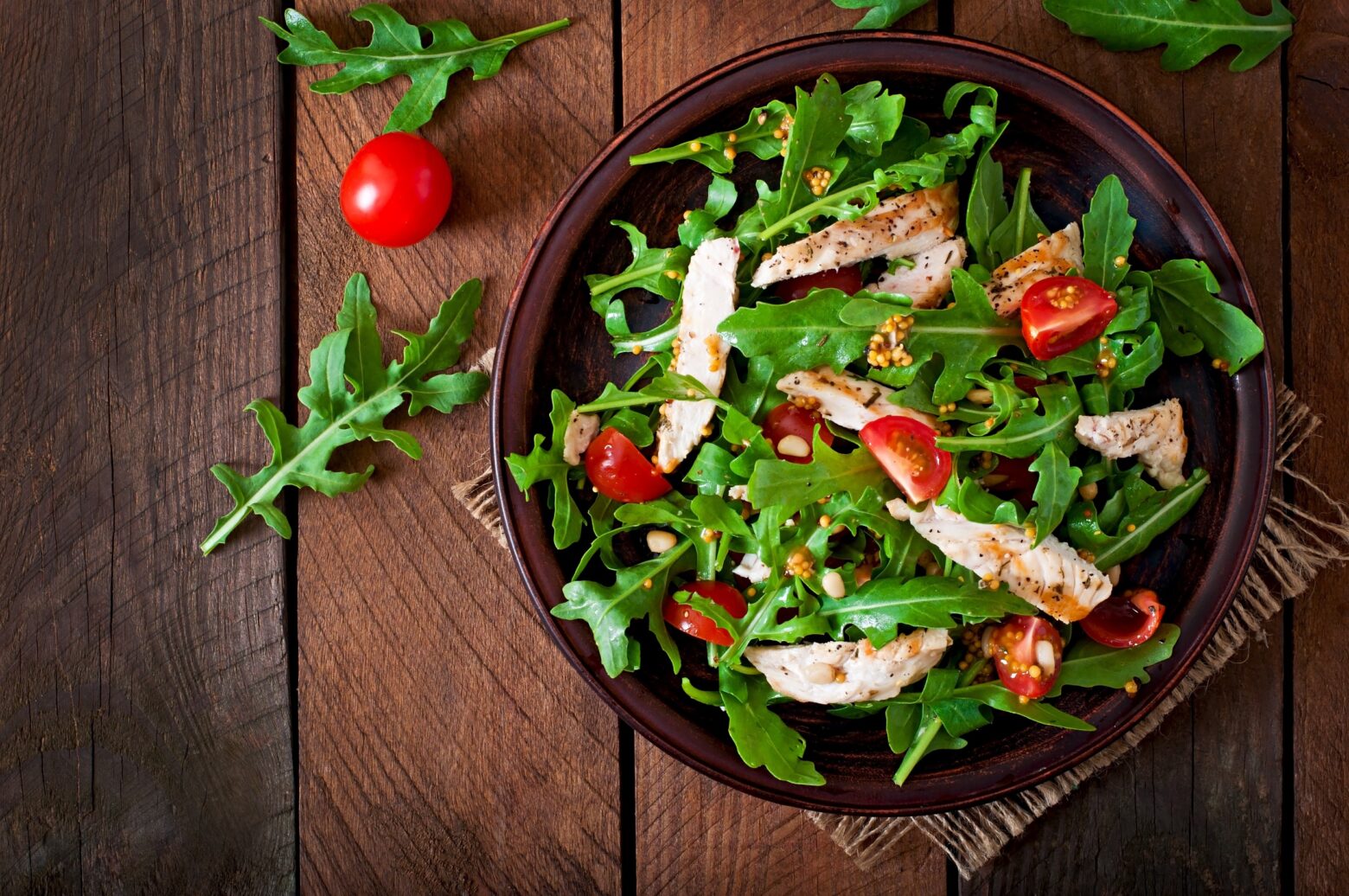Three Protein Myths You Might Still Believe

Let’s talk protein.
Scientifically speaking, protein is a macronutrient that consists of amino acid residues joined by peptide bonds. Proteins are present in all living organisms and are the building materials of many essential biological compounds such as enzymes, hormones, and antibodies. [1]
Needless to say, we need protein. While most of us are relatively clear on that fact, things get confusing once we address how much we need and where we should be sourcing this important component of our diet.
To clear up some of the confusion, I’ll go over a few common myths about protein.
Myth #1: Grass-Fed Meat Is the Same as Conventionally Raised Meat
While it may be more expensive, grass-fed meat is worth the extra cost. A grass-fed and finished steak is a completely different animal (pun intended) from its conventional counterpart. [2]
For starters, grass-fed meat contains less total fat, saturated fat, cholesterol, and calories than feedlot animals. Plus, the grass-fed variety offers more vitamin E, beta-carotene, vitamin C, and several health-promoting fats, including omega-3 fatty acids and conjugated linoleic acid. [3]
Nutrition aside, properly raised animals are also superior for the planet.
Feedlots typically deposit large amounts of manure in a small surrounding area, polluting the soil and water. When animals are raised in a pasture, their manure is spread over a wider area of land, making it a welcome source of organic fertilizer instead of a waste management problem. [4,5]
Myth 2: Portion Size Doesn’t Matter
It’s easy to fall into the trap of thinking that you can eat as much protein as you want. However, it’s important to know that most American adults overconsume low-quality proteins at the expense of other nutrient-dense foods. [6]
Eating too much protein is bad for our wallets, for our bodies, and for the environment. If we eat more than what our bodies need, we’re putting undue stress on the farms by demanding they overproduce.
Choose local, in-season veggies, and pair them with an appropriately sized portion (g/kg, based upon an individual’s needs) of mindfully sourced grass-fed meat, which it typically about the size of your palm.
In other words, rearrange your plate. Reverse that lonely piece of kale sitting next to the 16-ounce ribeye to a larger salad with a smaller portion of meat.
Myth 3: You Can Get Enough Protein as a Vegan
As a former vegan, I understand why you might want to make the choice to go meat-free.
However, it’s just not the right way to feed our bodies. Now I know that just a small amount of protein sourced from healthy, well-raised animals is crucial for our diet.
Our bodies need protein and relying solely upon grains and beans (both of which can cause or contribute to significant inflammation) doesn’t do the trick.
One of the best reasons to get protein from meat: brain health. Studies show that the modern human brain consumes 20 percent of the body’s energy at rest, twice that of other primates. Historically, meat and cooked foods were needed to provide the necessary calorie boost to feed a growing brain. [7] Meat was an integral, and not a sporadic, element of the prehuman diet more than one million years ago. [8]
General development relies on meat-based protein, too. Animal-sourced zinc stimulates healthier bones, while low zinc stunts growth.
In one study, researchers introduced meat to iron fortified baby cereal and found that the meat-fed infants had a substantially higher rate of brain growth. The study also identified trends of other developmental advantages. [6]
The Bottom Line
We’ve gotten so tied up with labeling diets: pescatarian, vegan, vegetarian, Paleo, and pegan (a combination of Paleo and vegan concepts).
What if we just dialed it way back to tuning into what food really is: a substance consumed to provide nutritional support for an organism?
Getting the right amount of protein is crucial for your health, and I invite you to be mindful about how much you eat and where you source it from.
References
- Koshland, Daniel E., and Felix Haurowitz. Protein.Encyclopædia Britannica, Encyclopedia Britannica, Inc., 20 Aug. 2020, www.britannica.com/science/protein.
- Cordain L, Watkins B, Florant G, Kelher M, Rogers L, Li Y. Fatty acid analysis of wild ruminant tissues: evolutionary implications for reducing diet-related chronic disease. Eur J Clin Nutr. 2002;56(3):181–91.
- Health Benefits of Grass-Fed Products. Eat Wild – Health Benefits, www.eatwild.com/healthbenefits.htm.
- Yang Y, Ashworth AJ, DeBruyn JM, Willett C, Durso LM, Cook K, et al. Soil bacterial biodiversity is driven by long-term pasture management, poultry litter, and cattle manure inputs. Peerj. 2019;7:e7839.
- Wyngaard N, Picone L, Videla C, Zamuner E, Maceira N. Impact of Feedlot on Soil Phosphorus Concentration. J Environ Prot. 2011;02(03):280–6.
- Egan, Sophie. How Much Protein Do We Need The New York Times, The New York Times, 28 July 2017, www.nytimes.com/2017/07/28/wel….Wanjek, Christopher. Sorry, Vegans:
- Eating Meat and Cooking Food Is How Humans Got Their Big Brains. The Washington Post, WP Company, 26 Nov. 2012, www.washingtonpost.com/national/health-science/sorry-vegans-eating-meat-and-cooking-food-is-how-humans-got-their-big-brains/2012/11/26/3d4d36de-326d-11e2-bb9b-288a310849ee_story.html.
- EatWild, www.eatwild.com/basics.html.
Nell Stephenson, B.S.
Nell Stephenson has been an advocate for The Paleo Diet since 2011, and is the co-author of The Paleo Diet Cookbook.
More About The Author




